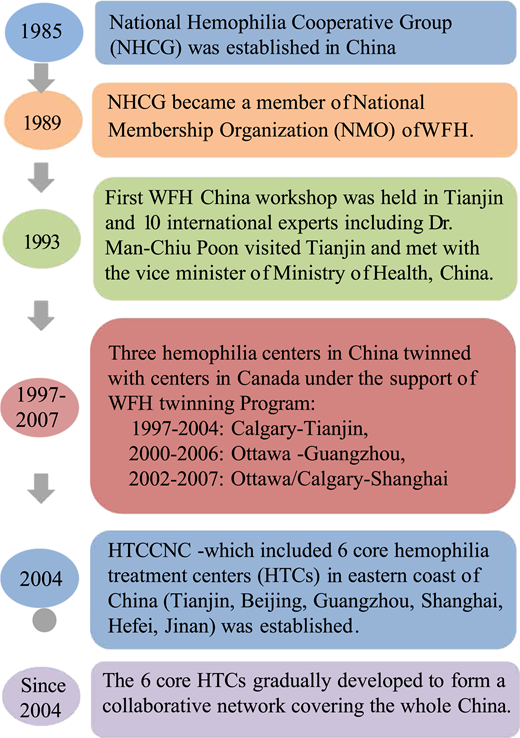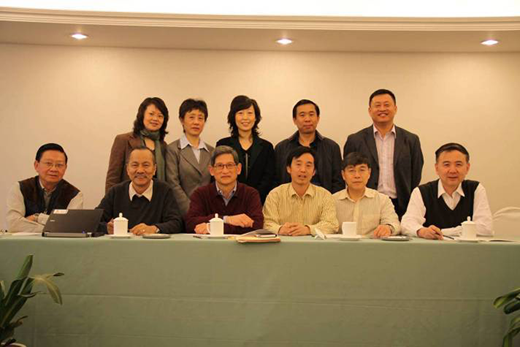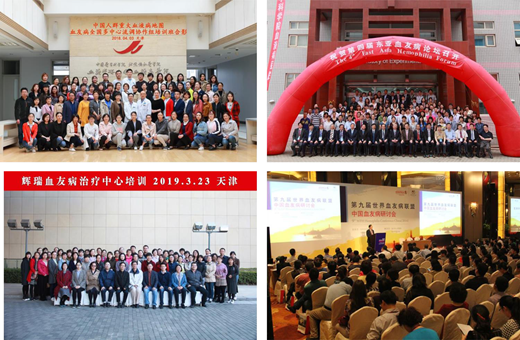Background
China is a large country with a population of 1.37 billion and an estimated hemophilia population of 65 000 to 130 000. However, the development of hemophilia care was slow in China before the 1990s, mostly because of the lack of medical resources and expertise for diagnosis and treatment, the unaffordably high cost of treatment, health care support that was not covered, and insufficient awareness of this rare disease. With the support of the World Federation of Hemophilia (WFH) and domestic policies, hemophilia care in China has developed gradually since the 1990s and the Hemophilia Treatment Center Collaborative Network of China (HTCCNC) was finally formed.
Data on the territory and population in the People’s Republic of China.
Formation of HTCCNC
HTCCNC major outcomes
Expansion from 6 to 115 centers
The initial HTCCNC consisted of only 6 core hemophilia centers but has now expanded to 115 centers. Each core center was responsible for the outreach education of HTCs in one region; network coverage has finally been realized throughout the country.
Because of the HTCCNC, the Chinese government began to develop a hierarchical medical system in 2004, and it set up designated medical institutions at the municipal, county, and provincial levels.
Establishment of the national hemophilia registration system
In 2009, the Chinese Ministry of Health (MOH) established a national hemophilia registration system with the Institute of Hematology and Blood Diseases Hospital, Chinese Academy of Medical Sciences, as the national hemophilia registry center, with 1 HTC in each of the 31 provinces as a provincial registry center to facilitate identification of patients who live in the provinces.
A total of 115 regional hospitals have participated in the registration system, and the system has now registered a total of 16 083 patients with hemophilia A and 2447 patients with hemophilia B.
A nationwide epidemiologic survey of hemophilia in China is currently underway and is using registration data and information from field visits to regional hospitals.
Promotion of low-dose prophylaxis
At present, full-dose prophylaxis is the standard treatment for hemophilia. However, the high costs and product availability limit the use of standard- or intermediate-dose prophylaxis in developing countries. HTCCNC led several studies to show the benefit of using low-dose prophylaxis to reduce joint bleeding, to improve quality of life, and to popularize affordable low-dose prophylaxis throughout the country (and other developing countries too).
How we accomplished the outcome
HTCCNC working groups
HTCCNC developed 5 working groups: registry, laboratory, nursing, pediatric, and physiotherapy. The purpose of the working groups was to standardize and improve hemophilia care in China.
Registry
○ Hemophilia registry evolved from the initial paper questionnaire to an electronic questionnaire and finally to a hemophilia information registration system. Each HTC has an account in the registration system to enter patient information.
Laboratory
○ The Laboratory Working Group collaborated with the National Center for Clinical Laboratories to establish national external quality control for factor VIII (FVIII) and FIX assays.
○ HTCCNC member centers also participated in the WFH International External Quality Assessment Scheme (IEQAS) and Laboratory Train-the-Trainer programs.
○ HTCCNC developed reference laboratories in Beijing, Tianjin, and Shanghai for diagnosing hemophilia and identifying hemophilia inhibitors.
Nursing
○ The Nursing Working Group has held annual hemophilia nursing forums since 2003 to educate and train hemophilia nurses. The group also developed nursing guidelines and manuals for hemophilia care.
○ There are specialized hemophilia nurses in most centers to coordinate with doctors regarding hemophilia care, patient registry, patient follow-up, and other work.
Pediatric
○ The Pediatric Working Group launched a China-Canada Cooperation Train-the-Trainer Project. The collaborative team translated the English version of Hemophilia Joint Health Score (HJHS) into a Chinese version and held training workshops to improve physiotherapy services in China. The team also used HJHS and Canadian Hemophilia Outcome-Kids’ Life Assessment Tool (CHO-KLAT) to assess the health-related quality of life and joint status of boys with hemophilia in China.
Physiotherapy
○ The Physiotherapy Working Group has been attempting to correct the misconceptions that people with hemophilia should avoid exercise and physiotherapy to prevent bleeding.
HTCCNC guidelines
HTCCNC partnership
HTCCNC collaborates with WFH and has participated in several WFH programs: Global Alliance for Progress (GAP), International Fellowship Program, and HTC Twinning Program. All of them have greatly improved hemophilia diagnosis and care in China. Core leaders of the HTCCNC coordinate the 8 projects (CN1-CN8) in China supported by the Novo Nordisk Hemophilia Foundation.
HTCCNC worked with the Chinese government to emphasize the importance of this rare disease. In 2009, the Chinese government established the national hemophilia registration and hierarchical medical system. In 2013, the MOH listed hemophilia as one of the 20 major diseases that occur in China and included it in health insurance areas that provide partial coverage for clotting factor concentrates.
HTCCNC also worked closely with the patients. The patient group called Hemophilia Home China (HHC) consists of active patient advocates and runs a Web site (http://www.xueyou.org).
Conclusion
The establishment of HTCCNC promoted hemophilia care in China. Over the past 15 years, HTCCNC has made great achievements in developing infrastructure, improving health coverage, creating information registries, providing professional education, and ensuring cooperation among various organizations. In the future, HTCCNC will aim to extend its network to rural and remote areas and to further improve hemophilia care in China.
Authorship
Conflict-of-interest disclosure: The authors declare no competing financial interests.
Correspondence: Renchi Yang, State Key Laboratory of Experimental Hematology, Institute of Hematology and Blood Diseases Hospital, Chinese Academy of Medical Sciences and Peking Union Medical College, 288 Nanjing Rd, Tianjin 300020, People’s Republic of China; e-mail: rcyang65@163.com.







